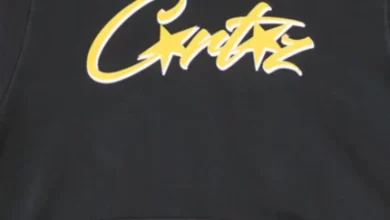What Factors to Consider When Choosing a Bridal Bouquet Style
Introduction
Choosing the perfect bridal bouquet is a significant decision for any bride, as it serves as a central piece that complements her attire and enhances the overall aesthetic of the wedding. Beyond just being a beautiful accessory, the bouquet holds symbolic significance and can tie together the entire look and feel of the ceremony. To make this choice wisely, several crucial factors should be considered, ranging from the style of the wedding to personal preferences and practical considerations. This guide explores these factors in detail to help brides navigate the process and select a bouquet that aligns perfectly with their vision and style.
Wedding Theme and Colors
One of the first considerations when choosing a bridal bouquet is the wedding theme and color scheme. The bouquet should harmonize with the overall aesthetic of the wedding day. Whether the theme is rustic, modern, vintage, or romantic, the bouquet plays a vital role in setting the tone. Consider the colours of the bridesmaid dresses, decorations, and venue when selecting flowers. For example, a rustic-themed wedding might feature wildflowers, sunflowers, and natural greenery, while a romantic wedding may opt for soft pastels like blush roses and peonies. It’s essential to ensure that the bouquet complements the bride’s dress and enhances rather than detracts from her overall look.
Seasonality of Flowers
The season in which the wedding takes place greatly influences the availability and cost of flowers. Choosing seasonal blooms not only ensures freshness but also helps in keeping costs reasonable. Spring weddings may feature tulips, daffodils, and cherry blossoms, while summer weddings often showcase roses, hydrangeas, and lilies. Fall weddings can incorporate dahlias, chrysanthemums, and autumn leaves, while winter weddings may opt for amaryllis, evergreens, and berries. Seasonal flowers also tie in beautifully with the natural surroundings, creating a cohesive and harmonious atmosphere.
Bridal Dress Style
The style and design of the bridal gown should complement the bouquet. Consider the silhouette, neckline, and embellishments of the dress when choosing a bouquet style. For example, a ball gown with intricate lace detailing may pair beautifully with a classic round bouquet of roses or peonies. A sleek, modern gown may be complemented by a minimalist bouquet of calla lilies or orchids, while a bohemian dress could be enhanced by a loose, hand-tied bouquet of wildflowers and greenery. The size and shape of the bouquet should also balance with the bride’s stature and the overall scale of the dress.
Bouquet Shape and Size
The shape of the bouquet plays a crucial role in defining its style and impact. Here are some popular bouquet shapes to consider:
-
Round Bouquet: A timeless and classic choice, featuring flowers cut to a uniform length and tightly bound together. Suitable for most wedding styles and dress types.
-
Cascade or Waterfall Bouquet: Characterized by flowers that trail down, resembling a waterfall. Ideal for formal weddings and dresses with a dramatic flair, the cascade bouquet adds elegance and sophistication.
-
Hand-Tied Bouquet: A more natural and relaxed arrangement where stems are left exposed and tied with ribbon. Perfect for rustic or bohemian weddings, the hand-tied bouquet exudes a sense of effortless beauty.
-
Posy or Nosegay Bouquet: Small and compact, typically featuring one or two types of flowers. Ideal for vintage or intimate weddings, the posy bouquet offers simplicity and charm.
The size of the bouquet should also be considered; larger bouquets make a statement but may overwhelm petite brides, while smaller bouquets can be delicate and elegant.
Personal Preferences and Sentiments
Incorporating personal preferences and meaningful elements into the bouquet adds a special touch to the wedding day. Consider including flowers that hold sentimental value or carry symbolic meanings. For example, roses symbolize love and romance, while lilies represent purity and devotion. Choosing flowers that resonate with the bride and groom adds depth and significance to the bouquet, making it more than just a floral arrangement but a reflection of their relationship and journey together.
Practical Considerations
Practical aspects such as budget, availability, and logistics are essential when selecting a bridal bouquet. Discussing budget constraints with a florist can help in exploring cost-effective options without compromising on style. Consider the logistics of carrying the bouquet throughout the day; ensure it is comfortable to hold and complements the overall comfort during the ceremony, photographs, and reception.
Consultation with a Florist
Consulting with a professional florist can provide valuable insights and guidance in selecting the perfect bouquet. Florists are experts in flower selection, bouquet styles, and seasonal availability. Bring fabric swatches from the bridal gown, photos of bouquet styles you admire, and any specific preferences to the consultation. A skilled florist can translate your vision into a stunning bouquet that enhances the bridal ensemble and complements the overall wedding theme.
Conclusion
In conclusion, choosing a bridal bouquet style involves careful consideration of the wedding theme, dress style, flower seasonality, personal preferences, and practical aspects. By taking these factors into account and collaborating with a professional florist, brides can select a bouquet that not only enhances their bridal attire but also reflects their unique style and adds beauty to their special day. Remember, the bridal bouquet is more than just a floral arrangement—it is a symbol of love, personal style, and the beginning of a new chapter in life.



